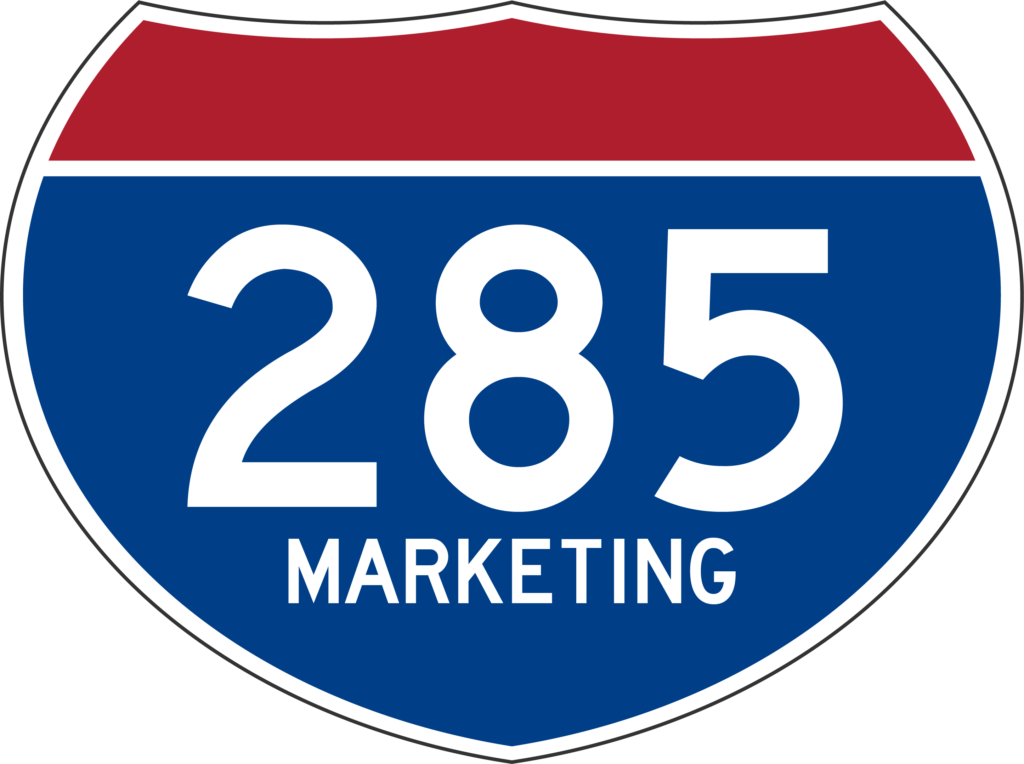In today’s fast-paced digital world, adapting to AI-driven marketing strategies is more than a trend—it’s a necessity for boosting your digital presence. As marketers, we are continually challenged by consumers’ increasing demand for personalization, rapid information exchange, and engaging content experiences. In this blog, we explore five detailed AI-driven marketing strategies tailored for 2025. Our aim is to provide you with actionable insights and deep dives into each approach, helping you elevate your digital presence while staying true to human creativity and the unique value we bring as a full-service agency.
1. Hyper-Personalization at Scale
One of the most powerful advantages of AI in marketing is its ability to deliver hyper-personalized experiences. Using advanced data analysis tools and machine learning, we can understand our audience at an unprecedented level. Instead of a one-size-fits-all approach, AI enables us to tailor experiences – from website content to email campaigns – in real time.
By tapping into customer data such as browsing behavior, purchase history, and demographic insights, our marketing strategies can adjust dynamically to each visitor’s preferences. This means:
- Real-Time Content Adjustments: Imagine a scenario where the content on your website changes based on the visitor’s previous interactions. For example, if a user has shown interest in design or branding services, our website can prominently feature our creative design portfolio and case studies that resonate with those interests.
- Customized Email Campaigns: Instead of sending generic emails, our AI tools help segment our mailing lists and craft personalized messages that drive engagement. Reports have shown that personalized email campaigns see significantly higher open and click-through rates.
- Targeted Product Recommendations: Using AI, product recommendations can be optimized in real time. By analyzing behavior patterns, we can suggest services such as SEO audits or PPC management that align closely with a visitor’s unique business challenges.
Implementing this strategy involves consolidating first-party data in platforms that act as Customer Data Platforms (CDPs), running A/B tests, and continuously refining our personalization criteria. Our collective experience at 285 Marketing shows that balancing data-driven precision with a human touch can significantly improve conversion rates and client satisfaction.
2. AI-Powered Content Production
Content is the cornerstone of any digital marketing strategy and a well-crafted narrative sets you apart from the competition. AI-powered content production isn’t about replacing human creativity, but rather about streamlining the initial process. By automating repetitive and routine tasks, AI enables our content teams to focus on crafting compelling narratives that truly resonate.
Consider the following benefits:
- Efficiency Gains: With advanced tools and generative AI technologies, we can significantly reduce the time spent on creating first drafts. For instance, AI tools can quickly generate outlines or draft blog posts, saving valuable hours that we then invest in refining and infusing personality into the final content.
- Consistency and Quality: Maintaining a consistent brand voice is critical. AI can help maintain this consistency across multiple content pieces and channels, ensuring that every blog post, social media update, or email campaign reflects our brand’s identity.
- Scalability: As businesses grow, the demand for content increases. With AI-driven tools, meeting higher content demands without sacrificing quality or brand integrity becomes much more manageable.
We believe in using AI as a partner rather than a replacement. Once AI produces the initial draft, our team of creative professionals steps in to enrich content with strategic insights, human nuance, and compliance checks. This tandem approach not only boosts productivity but also safeguards the authenticity of our brand story.
3. Voice & Visual Search Optimization
The way consumers search for information is evolving rapidly. A growing number of users now rely on voice commands and visual cues to discover products and services online — a trend that is reshaping digital marketing strategies.
Voice search, in particular, demands an understanding of natural language. Instead of focusing solely on keywords, marketers must optimize for conversational phrases. For example, queries like “Where can I find effective digital marketing strategies near me?” call for a different approach than traditional text-based searches.
Visual search, on the other hand, leverages image recognition technology to match user-submitted photos with a database of products or services. Here’s how we are adjusting our strategies to harness these powerful tools:
- Optimizing Content for Conversational Queries: We revamp our content to include natural language patterns, FAQs, and how-to guides that accommodate voice search. This not only improves our search rankings but also enhances user engagement.
- Integrating Visual Search Technologies: As mobile usage soars, enabling consumers to search for services via images is becoming crucial. By incorporating AI-based visual search tools, we aim to make our portfolio of creative and marketing services more accessible. This approach is particularly beneficial for design and branding services where visuals play a pivotal role.
- Enhancing User Experience: By aligning content with both voice and visual search demands, we create a seamless, multi-modal user experience that builds trust and drives conversions.
For digital marketers, adopting voice and visual search optimization is also about balancing technology with creativity. By embedding relevant long-tail phrases into your website content and harnessing visual storytelling in portfolios, we better engage tech-savvy audiences while staying true to our creative ethos.
4. Predictive Campaign Optimization
Predictive analytics is changing the landscape of campaign management. With AI-powered predictive tools, marketers—like us at 285 Marketing—can forecast trends more accurately, adjust budgets proactively, and ultimately boost campaign performance. The goal here is twofold: maximize ROI through smarter ad spend and enhance customer retention by anticipating audience behavior.
AI prediction engines analyze historical data to uncover patterns that inform several strategic decisions. Here’s what makes this approach effective:
- Real-Time Data Analysis: By continuously monitoring campaign performance, predictive models provide insights into which strategies are working and which need adjustments. This allows for dynamic reallocation of budgets and resources, ensuring that every dollar spent is an investment in higher engagement.
- Enhanced Customer Segmentation: Through AI, we can identify subtle differences between audience segments. This deeper understanding permits more granular targeting, from high-value prospects to those on the edge of churn.
- Strategic Forecasting: Predictive analytics can reveal future trends in customer behavior. With these insights, we set realistic KPIs and adjust our marketing strategies in anticipation of market shifts rather than merely reacting to them.
This form of campaign optimization requires a robust integration of marketing tech stacks and advanced analytical tools. Investing time in training and cross-functional collaboration between data analysts and creative teams ensures that predictive insights translate into practical strategies. It’s a balancing act—leveraging data for precision without losing sight of the creative storytelling that drives brand loyalty.
5. Autonomous Programmatic Advertising
Autonomous programmatic advertising harnesses AI to take over what was once a largely manual process. By automating the complex task of ad buying, we can target audiences with surgical precision while ensuring that our ads are delivered at optimal times and on the right platforms.
What does this mean for our digital presence? Essentially, it allows us to focus more on strategy while the AI handles the heavy lifting. Some key benefits include:
- Real-Time Bidding Efficiency: AI-powered platforms can adjust bids multiple times per day based on performance data. This level of dynamic optimization ensures that ad spend is allocated efficiently, which maximizes overall ROI.
- Enhanced Creative Optimization: By analyzing which ad creatives are driving the most engagement, autonomous systems can shift budgets toward the highest-performing assets. This ensures that our messaging remains fresh and impactful without constant manual intervention.
- Cross-Channel Synergy: Autonomous advertising systems can track performance across multiple touchpoints—from social media to search engines— and adjust strategies in real time. This integrated approach contributes to a more cohesive and effective campaign.
While the numbers behind these advancements are impressive, the underlying value is clear: AI allows us to optimize at a scale that human teams alone would struggle to match. Embracing autonomous programmatic advertising means that we can focus our creative energies on designing campaigns that truly resonate with audiences, while the algorithms ensure that our message reaches the right people at the right time.
Implementation Checklist for AI-Driven Marketing Strategies
Transitioning to an AI-first approach in digital marketing may seem daunting, but with a clear plan on hand, the benefits far outweigh the challenges. To help you get started, we’ve compiled a comprehensive checklist:
- Audit Your Martech Stack: Identify gaps in your current technology and assess where AI integration can deliver immediate benefits, especially in personalization and data analysis.
- Invest in Training: Ensure your teams are well-versed in AI tools and technologies. Continuous learning through platforms like Coursera or specialized training sessions is key to successful adoption.
- Define Clear KPIs: Set measurable objectives for each initiative—be it improving email open rates or increasing website engagement—to track performance effectively.
- Implement Ethical AI Practices: As you integrate AI into your strategy, ensure that data privacy and ethical considerations are at the forefront. Transparency in data usage boosts consumer trust.
- Adopt a Test-and-Learn Mindset: Use controlled experiments such as A/B testing to determine the impact of AI-driven initiatives. Regular analysis and feedback loops help fine-tune strategies over time.
The journey to adopting these AI-driven strategies is iterative. Start with small pilot projects, measure outcomes, and scale gradually. Each step informed by accurate data and creative insights sets the stage for long-term growth and innovation.
Moving Forward with AI and Human Creativity
At 285 Marketing, we view AI as a powerful extension of our creative capabilities—not a replacement. It’s the synergy of advanced technology with passionate storytelling and innovative design that truly drives growth. As you implement these strategies, remember that the end goal is not just automation or efficiency. It’s about crafting experiences that resonate on a personal level with your audience and build lasting relationships.
We encourage you to experiment with these AI-driven marketing strategies, always measuring and refining your approach as you learn. Our commitment to delivering tailored digital solutions for small and medium businesses remains unwavering. With a blend of cutting-edge technology and a deep understanding of human behavior, the future of marketing is both exciting and attainable.
For more personalized advice on how to integrate these strategies into your marketing mix, feel free to reach out to us. We look forward to partnering with you on the journey toward an increasingly digital and dynamic landscape.
By embracing the power of AI while nurturing human creativity, we can create digital experiences that are not only efficient and highly targeted but also deeply engaging and authentic. Here’s to a future where technology and creativity work hand in hand to elevate your digital presence in 2025 and beyond.
Thank you for joining us on this in-depth exploration of AI-driven marketing strategies. We are excited to see how these innovations help you shape the future of digital marketing. Let’s continue to push the boundaries together.








